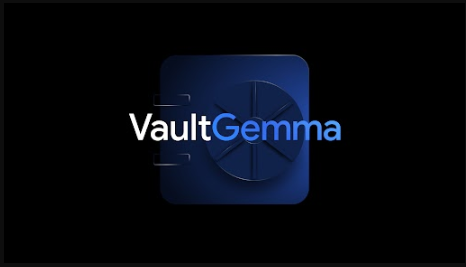AI lên ngôi ở thị trường năm 2025: Buffett cược lớn, Nvidia dẫn dắt đổi mới, và quyền riêng tư cùng quản trị được làm nổi bật
Author: Staff Writer

Cuộc cách mạng trí tuệ nhân tạo không còn là một chủ đề đầu cơ giới hạn trong các blog công nghệ và các cuộc họp báo doanh thu quý. Năm 2025, AI đang từ hype chuyển sang hạ tầng, khi vốn, chính sách và tâm lý người tiêu dùng đều đồng thuận quanh một vài ý tưởng biến đổi. Đứng đầu trong số đó là khoản cược được cho là 68 tỷ USD của Warren Buffett vào chỉ hai cổ phiếu AI — một động thái cho thấy sự quy mô lẫn sự kiên nhẫn mà nhà đầu tư giá trị nổi tiếng nhất thế giới sẵn sàng áp dụng cho một công nghệ mà ông thường xem nhẹ. Cược này đã trở thành tâm điểm cho một câu chuyện thị trường rộng lớn hơn, nơi các nhà đầu tư dày dạn kinh nghiệm tìm kiếm những phơi nhiễm AI bền vững và đáng tin cậy, đồng thời quản lý rủi ro theo trình tự đi kèm với sự thay đổi công nghệ nhanh chóng.
Phương pháp của Buffett — được đặc trưng bởi tầm nhìn dài hạn, nhấn mạnh các yếu tố nền tảng, và xu hướng ưu tiên chọn người chiến thắng có lợi thế cạnh tranh rõ ràng — đối lập với các giao dịch theo động lực điên cuồng đôi khi đặc trưng cho các tên tuổi công nghệ tăng trưởng cao. Tuy nhiên hai cổ phiếu AI mà ông được cho là nhắm tới vẫn chưa được tiết lộ trong phần nói chuyện công khai, nhắc nhở rằng ngay cả trong một thế giới nơi AI phổ biến, các nhà đầu tư vẫn khao khát sự chọn lọc. Điều quan trọng không phải chỉ là số lượng bài luận AI có thể viết, mà là chất lượng mô hình kinh doanh, độ bền của lợi thế cạnh tranh và khả năng chuyển sức mạnh của thuật toán thành lợi nhuận thực cho nhiều năm tới. Theo một cách nào đó, cược của Buffett tóm gọn một căng thẳng cốt lõi của kỷ nguyên này: liệu sự gián đoạn do AI mang lại có phải là một cuộc đua vĩnh viễn với các nền tảng ngày càng lớn hay là một phiên bản bền vững hơn nơi các công ty đã thành lập khai thác AI để cải thiện dòng tiền và sự ổn định?

Khoản cược táo bạo của Warren Buffett vào hai cổ phiếu AI cho thấy sự chuyển hướng đáng chú ý tới tăng trưởng bền vững được AI hỗ trợ.
Bên cạnh những tin tức về Buffett, những động lực nổi bật khác của thanh khoản AI và rủi ro đang được thể hiện. Nvidia, từ lâu được xem là xương sống bán dẫn của AI hiện đại, vẫn hiện diện nổi bật trong các cuộc trò chuyện của nhà đầu tư ngay cả khi tên của nó không xuất hiện trong danh sách ngắn của Buffett. Trong một thị trường nơi phần mềm và phần cứng AI ngày càng phụ thuộc lẫn nhau, các nhà đầu tư nhận thấy các cơ hội liên quan tới Nvidia vượt ra ngoài một cổ phiếu sang một hệ sinh thái rộng lớn hơn. Các báo cáo gần đây cho thấy Nvidia có khoảng 4,3 tỷ USD được đầu tư vào một nhóm vài cổ phiếu liên quan AI—trên sáu công ty—một sự phân bổ cho thấy sự lan tỏa của chu trình phần mềm và chip của Nvidia trên các danh mục đầu tư. Câu chuyện không chỉ là về một công ty duy nhất hoạt động tốt; mà là về chuỗi giá trị AI trưởng thành thành một lớp tài sản có nhận diện với nguồn doanh thu định kỳ, hệ sinh thái nền tảng và tiềm năng tăng trưởng tối ưu vốn. Trong khi đó, ngân hàng trung ương và chính sách vĩ mô tiếp tục định hình khẩu vị rủi ro quanh những khoản đầu tư này. Hướng dẫn của Cục Dự trữ Liên bang, được phản ánh qua bình luận thị trường, quyết định cách các nhà đầu tư định giá phơi nhiễm AI theo thực tế tiền tệ, trong khi các thị trường lớn từ London đến Tokyo theo dõi tình hình thanh khoản toàn cầu.
Một hình ảnh về động lực đầu tư AI, với các nhà sản xuất chip và nền tảng phần mềm ở trung tâm của dòng vốn.
The consumer-facing front of AI—apps and experiences that everyday users interact with—also reveals tensions between speed, access, and governance. A recent episode around Google’s Gemini climbing to the top of Apple’s App Store free app rankings and related discussions about alleged rigging illustrates how AI-enabled products are increasingly battlegrounds for platform power, consumer trust, and regulatory scrutiny. Elon Musk’s public salvo accusing Apple and OpenAI of colluding to manipulate rankings underscores that the AI ecosystem is not only a laboratory of algorithms but a theatre of competition where legal risk and reputational considerations can influence strategy as much as technical capability. The confluence of consumer apps, platform governance, and potential anticompetitive behavior highlights a broader trend: AI’s mainstream adoption depends as much on open, fair access to distribution channels as it does on breakthroughs behind the scenes.

Việc Gemini của Google leo lên trong bảng xếp hạng App Store trở thành điểm nóng cho các cuộc tranh luận về khám phá ứng dụng và sự công bằng nền tảng.
In enterprise security and risk management, AI continues to extend its reach from analytic corners to mission-critical pipelines. SentinelOne’s announcement of acquiring Observo AI to enhance its security telemetry pipeline reflects a broader push to weave AI-native data into threat detection, incident response, and compliance workflows. Fenwick & West LLP’s representation of SentinelOne on the deal signals the gravity of these transactions in the legal and regulatory context—where deals are not only about technology fit but about risk allocation, data governance, and the ability to scale privacy-conscious data processing across heterogeneous networks. As AI becomes embedded in security operations, firms face rising expectations to protect sensitive information while extracting actionable insights from vast telemetry streams.

VaultGemma—Google’s differential privacy-driven LLM represents a frontier in privacy-preserving AI.
The privacy dimension of AI is not theoretical. A landmark development in differential privacy and privacy-preserving AI includes VaultGemma, described as the world’s most powerful differentially private LLM. Built on Google’s Gemma architecture, VaultGemma aims to shield sensitive data and reduce disclosure risk even as AI systems learn from large-scale datasets. This is not a marginal improvement; it is a reorientation of what it means to train and deploy LLMs in environments that require strong guarantees about data privacy. The practical implications span regulated industries—healthcare, finance, and government—where compliant handling of personal information is non-negotiable. Yet, the challenge is substantial: preserving privacy often comes at the cost of model performance, requiring sophisticated techniques and careful trade-offs in the training process.

VaultGemma demonstrates how differential privacy can reshape the capabilities and governance of large language models.
In a parallel development, the enterprise security space is watching how AI can be harnessed to protect, rather than just analyze, data flows. The SentinelOne deal with Observo AI is part of a broader market where AI-driven telemetry and anomaly detection are becoming standard requirements for modern security stacks. The acquisition points to a future in which security providers must not only respond to threats but also ensure that sensitive telemetry itself is governed by privacy-preserving techniques and auditable controls. As enterprises accelerate AI adoption, governance frameworks will increasingly influence which vendors win the race to provide integrated, compliant AI-powered security infrastructures.

OpenAI’s new coding paradigm — ‘New Code’ — could elevate the role of spec authors in AI-driven development.
A broader developmental shift is unfolding as well. OpenAI’s reported emphasis on a “New Code” approach suggests a move away from ad hoc prompts toward structured specifications that govern AI-driven software construction. Analysts and developers are watching how this shift could elevate the status of spec authors—the people who write the blueprints that guide AI systems and the developers who implement them. The idea is to translate business requirements, safety constraints, and user experience goals into concrete, machine-readable specifications that reduce ambiguity and create a shared language among stakeholders. If this trend accelerates, it could redefine the most valuable skill in AI-enabled software development: the ability to design precise, verifiable specs that align teams across product, engineering, and governance.
Beyond engineering practice, a broader geopolitical and governance conversation is taking shape around “sovereign AI.” Gartner’s assertion that sovereign AI and agents could reshape global government services points to a future where automated decision-making and AI-enabled workflows become central to public administration. The idea is not merely about building domestic AI capabilities; it is about ensuring that AI systems operate within trusted, policy-driven boundaries that respect national sovereignty, data localization requirements, and public accountability. Governments are experimenting with AI agents to handle routine tasks, triage information, and support complex policy simulations, all while balancing concerns about transparency, bias, and security.
Market observers have also begun to entertain explicit long-horizon forecasts about AI-driven equities. A controversial but widely cited piece suggested that a certain AI stock could surpass Palantir’s value within three years, underscoring the market’s willingness to place top-dollar bets on AI-enabling platforms that promise outsized returns. While such predictions are speculative, they reveal the market’s perception of AI as a category capable of delivering exponential appreciation—so long as the underlying business economics justify the valuation and the technology remains on a sustainable trajectory.
Looking ahead, several themes are likely to shape the AI investment and development landscape over the next 12 to 24 months. First, the AI hardware-software cycle will continue to mature, with demand for chipmakers, infrastructure software, and platform services creating a broad base of opportunities. Second, privacy and governance will grow in importance as more organizations deploy AI at scale and must balance innovation with compliance. Third, the dev bar may shift to a more structured, spec-driven culture that aligns technical work with practical outcomes and risk controls. Finally, government adoption of AI-enabled services and agents will become a more visible and contested front in the policy arena, influencing funding, procurement, and international collaboration. Taken together, these forces suggest a future in which AI is a mature, multi-trillion-dollar ecosystem rather than a transient trend.
In sum, the AI moment is characterized by big bets, enduring technical advances, and a layered governance landscape. Buffett’s headline wager reflects a market that prizes durability and scale, while Nvidia’s ecosystem-building work underscores the ongoing demand for AI acceleration. At the same time, breakthroughs in privacy-preserving AI, corporate security, developer tooling, and sovereign AI governance reveal a broader, multi-faceted transformation in which AI touches nearly every sector. For investors, technologists, policy-makers, and the general public, the coming years will test not only the speed of AI progress but the wisdom with which society channels its benefits.